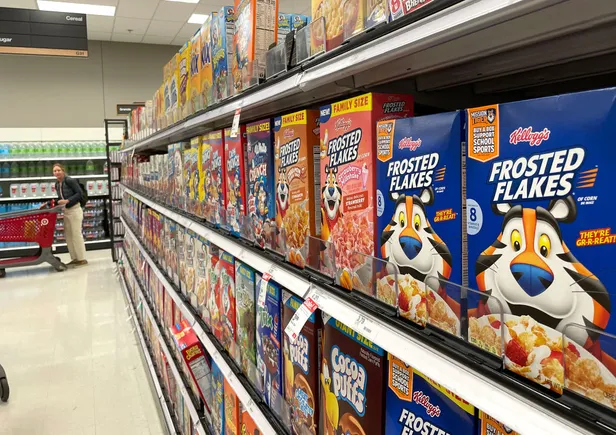As the possibility of a renewed trade war casts a shadow over the food and beverage industry, experts predict that companies may respond by either increasing prices or subtly reducing costs through strategies such as smaller portion sizes or reformulating ingredients. The current administration, under President Donald Trump, is actively utilizing tariffs to redefine global trade policies. Recently, Trump announced a 25% tariff on steel and aluminum imports across all nations, with additional duties on imports from Canada and Mexico set to take effect shortly.
The food sector is particularly susceptible to the ramifications of tariffs due to the perishable nature of its products, which complicates the ability of companies to make adequate preparations. While the vast majority of food consumed in the United States is domestically produced, many companies rely on imports for essential ingredients and packaging materials. For instance, Canada emerges as a significant supplier of oats and has become increasingly integral to cocoa processing. Similarly, Mexico plays a crucial role in the beverage sector, being one of the largest suppliers of beer, flavored waters, and liqueurs.
Tariffs extend beyond the realm of ingredients; they can also disrupt production aspects such as packaging. Canada supplies metal and paper products, so a tariff on steel and aluminum could drive up costs for canned foods and beverages. The consumer packaged goods (CPG) sector operates on tight margins, and food companies may not have the capacity to absorb these tariff costs without passing them on to consumers. However, many businesses are likely to approach price increases with caution, especially given the ongoing grocery inflation that consumers are currently facing.
According to Kent Esslinger, senior director of industry solutions for o9 Solutions, a firm that assists major CPGs like PepsiCo and Mondelēz International in optimizing their supply chains, companies are likely to be very deliberate about any price increases at this time. He explains that consumers have made it clear that they are unwilling to tolerate continual price hikes. Consequently, CPG companies will likely seek alternative cost-cutting measures. Strategies may include sourcing different ingredients, redesigning packaging, or reducing the size of products—commonly referred to as “shrinkflation.”
Some prominent food and beverage companies have already begun to announce potential changes in response to the looming tariff threats. For example, in light of the 25% tariffs on steel and aluminum, Coca-Cola has indicated it may shift to selling a greater portion of its sodas in plastic containers instead of cans. As Esslinger notes, the winners in this situation will be those companies that can respond with precision and strategic targeting without sacrificing volume or market share.
However, not all food companies have the necessary flexibility to adjust their supply chains in response to rising costs, particularly those heavily reliant on imports within the fresh fruit and vegetable sector. For these businesses, the options for mitigating the impact of tariffs are limited, and any increased costs are likely to be passed directly on to consumers. In 2023, Mexico accounted for half of U.S. fresh fruit imports and an astonishing 69% of fresh vegetable imports by value, according to data from the Department of Agriculture. Given the specific climatic requirements for growing certain products like avocados, it is improbable that U.S. farms could fully compensate for any shortfall in imports.
While other industries may be stockpiling components or supplies in anticipation of a trade war, the food sector faces unique challenges in this regard. As Madrecki points out, it is not feasible to simply stockpile perishable items such as bananas, as their shelf life is limited.
In light of these challenges, food and agricultural groups have urged the administration to exempt certain ingredients that cannot be cultivated domestically from tariff regulations. The Consumer Brands Association is advocating for a strategic approach that aligns with the administration’s geopolitical objectives without further exacerbating consumer prices. Madrecki emphasizes the widespread concern about rising costs and grocery inflation across the nation, urging the administration to exercise caution in determining where tariffs should be imposed.
In conclusion, the potential for escalating trade tensions poses significant challenges for the food and beverage industry. Companies are confronted with the dual pressure of rising costs due to tariffs and the necessity to remain sensitive to consumer price tolerance. As they navigate this complex landscape, businesses will need to adopt innovative strategies to manage costs while minimizing the impact on consumers. The unfolding situation requires careful consideration from both industry stakeholders and policymakers to ensure that the needs of consumers are met without sacrificing the economic viability of the food sector.




